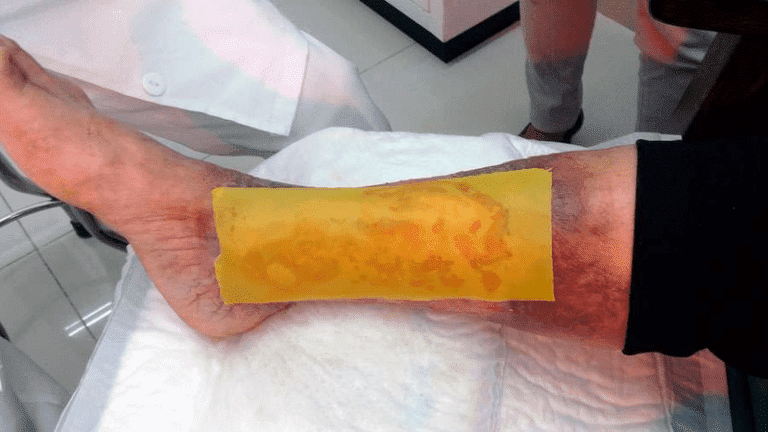RIO DE JANEIRO, BRAZIL – Researchers from the Center for Higher Studies in the city of Tepeaca, Mexico, succeeded in healing the wound of a diabetic foot by applying virgin honey and a patch made of hive wax.

According to Dr. Armando Acevedo Méndez, a student from Sierra de Puebla reported on the benefits of honey his family used to harvest. He had been in contact with the bees since he was five years old and passed on his experience to the students, who decided to submit the honey to bacteriological studies and found that it had healing properties.
Using the substance they developed a patch that can be shaped to fit the wound. First the wound is disinfected, then the honey is placed and finally the patch is covered with a cloth called organdi. With this patch, patients not only improve scarring as well as reduce the wound’s bacterial load.
The treatment was tested in a group of 15 patients, who underwent the treatment for a period between 14 and 21 days. Six people’s wounds fully healed and one elderly man dropped out of the treatment because no one was available to take him for dressings. The remaining eight patients continued in the procedure and observed improvement.
“We have each case recorded in clinical files. As the results have been favorable, we decided to take part in the National Innovation and Technology Award for Social Inclusion (INNOVATIS) in the health area and out of the 196 entries we ranked sixth. The award was sponsored by CONACYT, CIDE, UAM and SEDESOL,” said Acevedo.
The concept of treatment with honey was born at the Tepeaca Center for Higher Studies, where a group of students dedicated themselves to studying the health conditions that trigger diabetes, given that over 90,000 people suffer from the disease in the state.
Acevedo, who is also director of the Advanced Wound Unit of the San Baltazar Medical Service, adds that the treatment has been beneficial also in patients who would have their feet amputated due to infected wounds. Diabetics’ feet often feel no pain so wounds or ulcers can develop into infections without being treated.
“What matters for the school and hospital management is that people have adequate and free treatment and do not need to amputate limbs. We want it to be accessible to the population that lacks resources and therefore does not pursue treatment,” concludes Acevedo Méndez.

